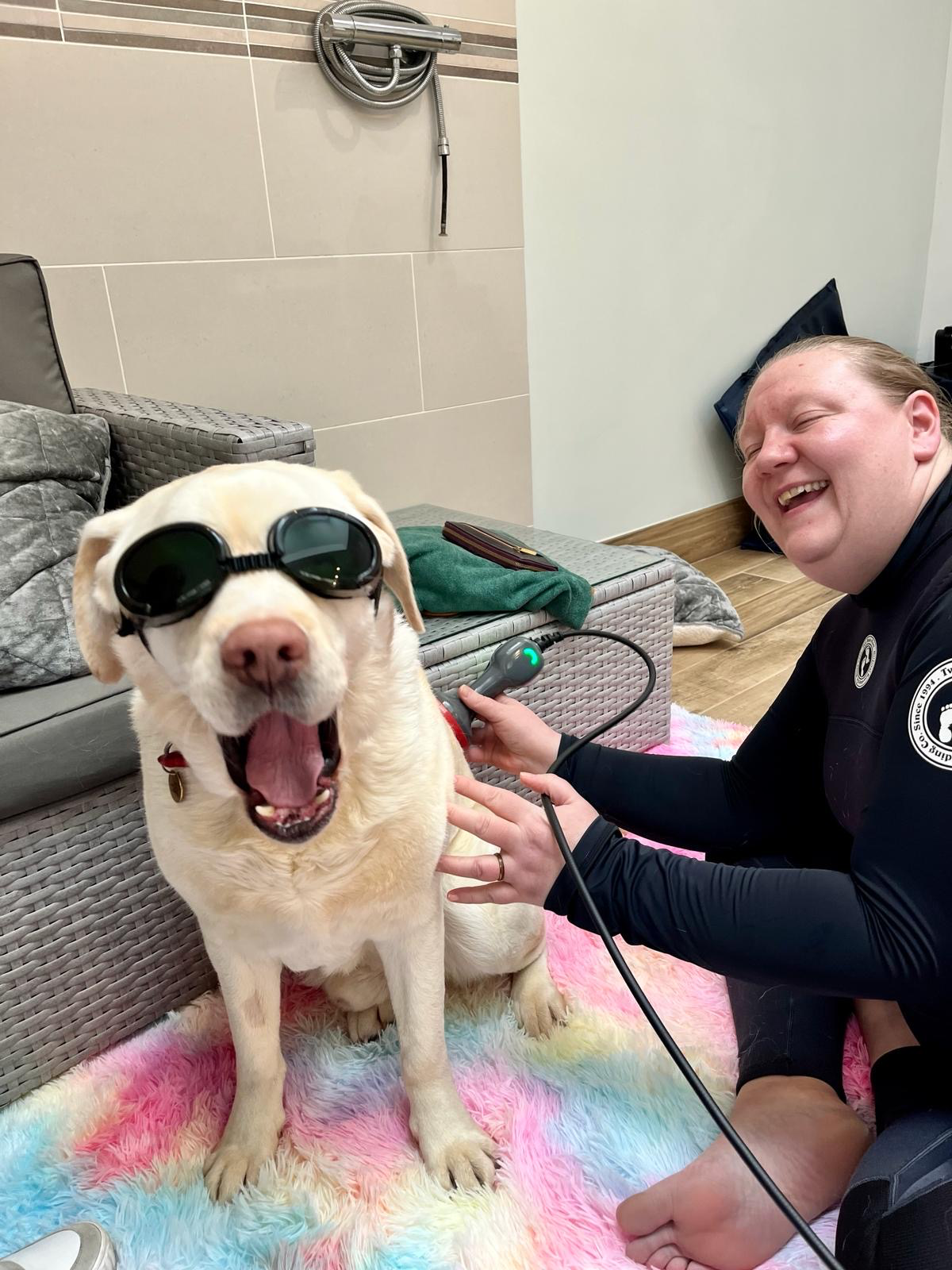Laser Therapy
What Is Class IV Laser Therapy
Laser therapy, also know as photobiomedulation therapy, can play a significant role in canine rehabilitation, complementing hydrotherapy and physiotherapy treatment. This non-invasive treatment involves applying a specific dosage of light energy onto an affected tissue, such as a joint or muscle, stimulating a cellular reaction that, increases circulation, reduces inflammation, alleviates pain and accelerates the healing process.
Class IV laser therapy, which is what we use at CS Hydro-physio, is more powerful than the common Class III lasers or red light therapy. This means we can target deeper tissues with higher doses to generate effects more quickly and with far fewer treatments.


What Conditions Can Laser Help With?
Laser therapy can be used to aid a wide variety of conditions, including:
- Post-Surgical Recovery
- Joint Pain, Dysplasia & Arthritis
- Muscle Pain, Tears & Strains
- Open Wounds
- Fractures & Breaks
- Tendon & Ligament Injury’s
- Nerve Pain & Damage / Dog With Paralysis
- Ear Infections
- And More!
But How Does It Work?
Laser therapy works by delivering a precise dosage of light energy to the targeted tissue. This light energy triggers a cellular response, increasing ATP (energy) production within the cells. This energy then promotes cellular functions, accelerating the healing process.
Additionally, laser therapy prompts the release of various natural chemicals in the target tissue, which increase blood flow, remove waste products, reduce inflammation, and alleviate pain.
The alleviation of pain and increased healing lead to a more comfortable dog, who can move more easily and work towards rehabilitation goals faster and more efficiently.
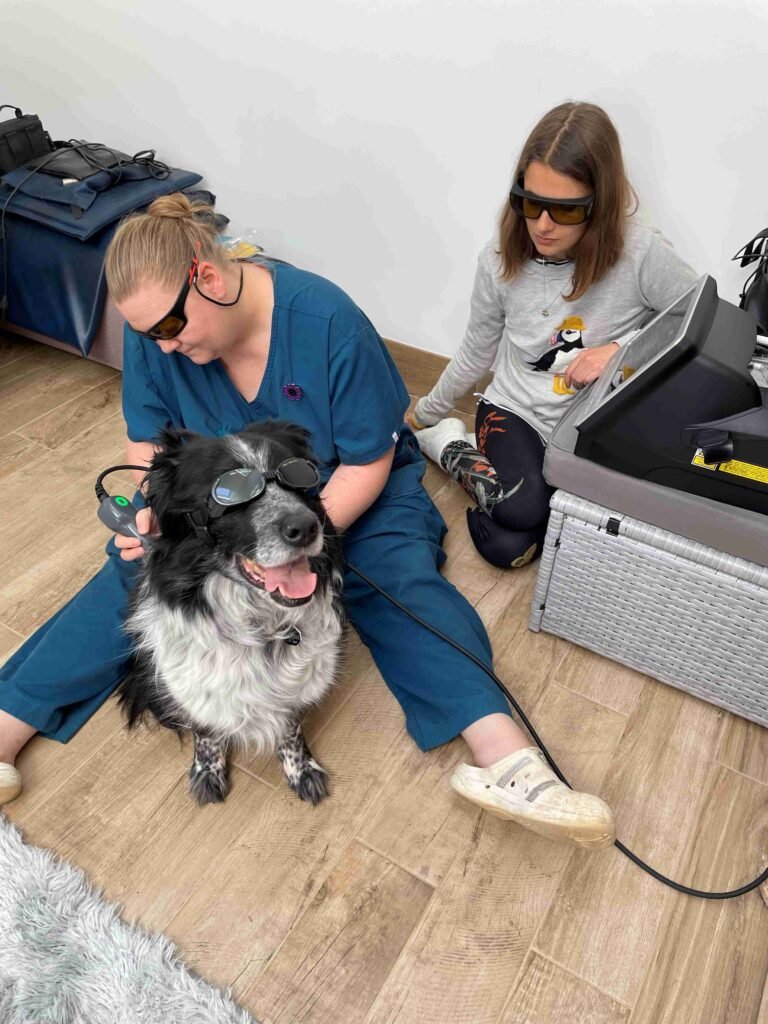
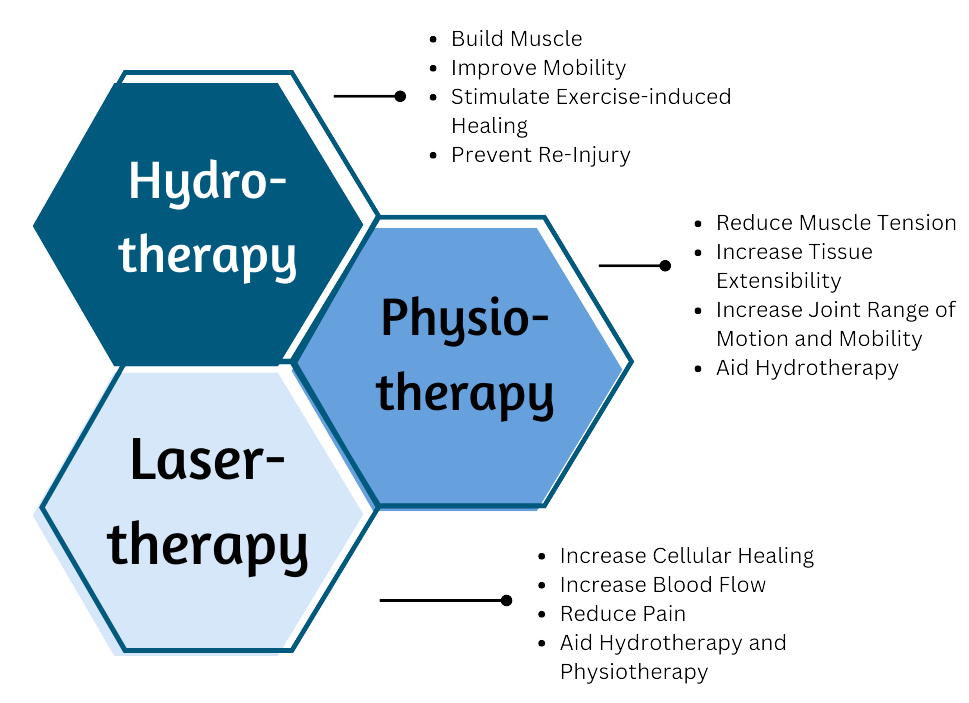
Our Treatment Triad
By integrating laser therapy with hydrotherapy and physiotherapy as needed, we ensure the highest standard of treatment for your dog…
Imagine you’re dealing with a knee injury and are determined to strengthen the supporting muscles at the gym. Despite your dedication, ongoing pain and poor joint mobility, limits muscle building. However, by integrating laser therapy and physiotherapy into your regimen to reduce pain and enhance mobility, you can achieve effective muscle building, free from discomfort. This supports the joint, accelerates the speed of recovery and reduces the risk of re-injury. It’s the same for your dog!
How Often Would My Dog Need Laser?
At CS Hydro-Physio Ltd, we utilise our Class IV Laser in two different ways: individual treatments/loading dose and, as part of our hour-long combined therapy sessions. For the quickest results, we strongly recommend administering the loading dose of laser therapy, as discussed below, followed by its inclusion in combined therapy sessions after this. However, for dogs with less urgent needs, they can still experience benefits from laser therapy when combined with other treatments in their weekly sessions.
Individual 30-minute Laser Appointments // Loading Dose:

For optimal and rapid effects, we recommend a treatment regimen of twice a week for three weeks (referred to as a 2-2-2), known as a loading dose.
This is followed by weekly treatment for a few weeks (which may then be combined with other therapy) before working to spacing out the treatments. The frequency of treatments varies for each dog, depending on how long the benefits last and is closely linked to the type of injury/condition each dog has:
- Post-surgery pain, trauma-induced muscle pain, and uncomplicated spinal injuries are likely to space out to once every 4 weeks.
- Arthritis, particularly more severe cases, benefit well with fortnightly treatment, or every 3 weeks for milder or preventative cases.
- Degenerative Myelopathy (degeneration of the spinal cord) responds amazingly to once-weekly treatment, helping to slow down nerve degeneration and improve quality of life for as long as possible.
Combined 60-minute Laser-Hydro-Physio Sessions:
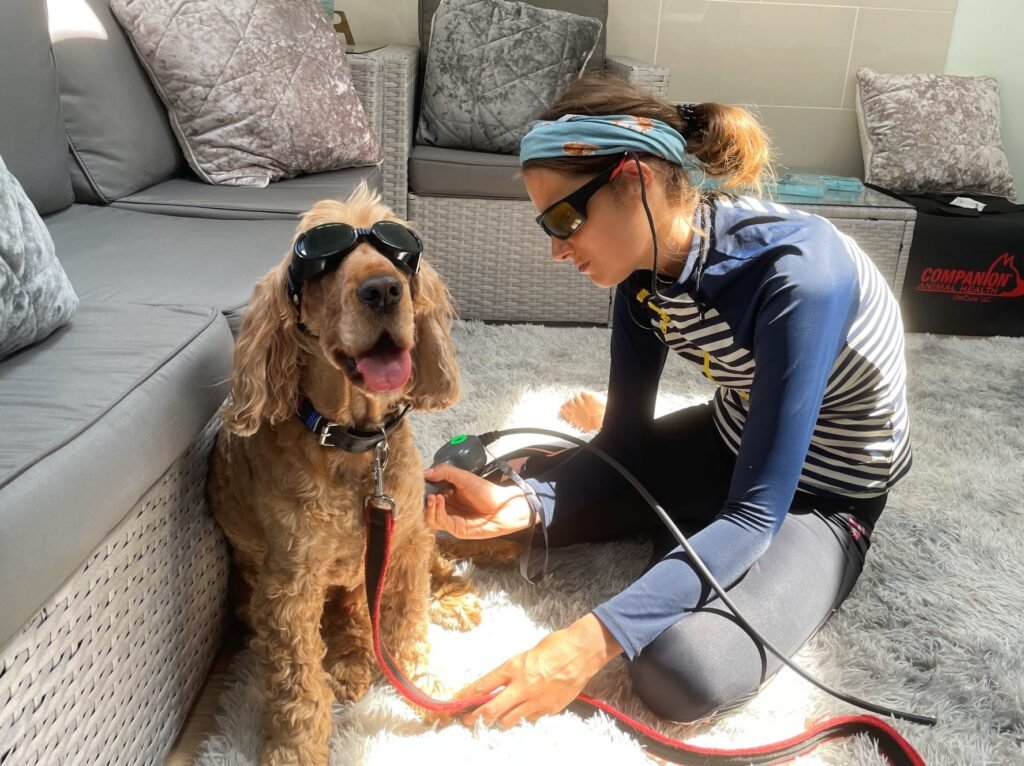
In our weekly combined therapy sessions, dogs receive laser therapy once a week for approximately six weeks alongside their hydrotherapy introductory program. Subsequently, we gradually space out the sessions, similar to our hydrotherapy protocol:
- 1 appointment a week for 6 weeks
- 2 appointments fortnightly
- 2 appointments at 3-week intervals
- then transitioning to monthly maintenance
However, some dogs may benefit from maintenance on a more regular basis depending on their ages (aging slows healing and muscle building) and the severity of their conditions.
While the effects of laser therapy may not accumulate as quickly in this setting compared to the loading dose approach, it remains extremely beneficial throughout the treatment course, particularly for less severe cases with mild pain and discomfort.
*Not sure what treatment would benefit your dog best? Don’t worry, this is something we will discuss in your initial consultation or can discuss over the phone or via email prior to your appointment.
What About The Evidence?
The strength of evidence supporting laser therapy is impressive. Laser therapy has been extensively studied and proven beneficial in reducing pain and inflammation associated with various conditions in both humans and animals. Here are a few examples:
-
Wound Healing: Research had demonstrated that laser therapy significantly improved wound healing in dogs on days 7 and 21 when compared to traditional treatments. The results showed not only improved scar appearance but also suggested a quicker and more even healing process [1].
-
Intervertebral Disc Disease (IVDD) Treatment: A study highlighted that dogs suffering from IVDD and treated with low-level laser therapy post-surgery regained mobility a week earlier than those who did not receive laser treatment [2].
-
Laser Therapy for Canine Osteoarthritis: Significant reductions in canine pain were observed after just one session of laser therapy in dogs with arthritis. These benefits continued to improve with subsequent treatments, with most dogs able to reduce their pain medication intake by the second week of treatment [3].
-
Hydrotherapy and Laser Therapy for Canine Hip Dysplasia: Research found that both hydrotherapy and laser therapy, whether applied separately or together, lessened chronic pain and enhanced the quality of life for dogs suffering from hip dysplasia [4].
If you would like to find out more about the equipment we use, visit the Companion Animal Health website.
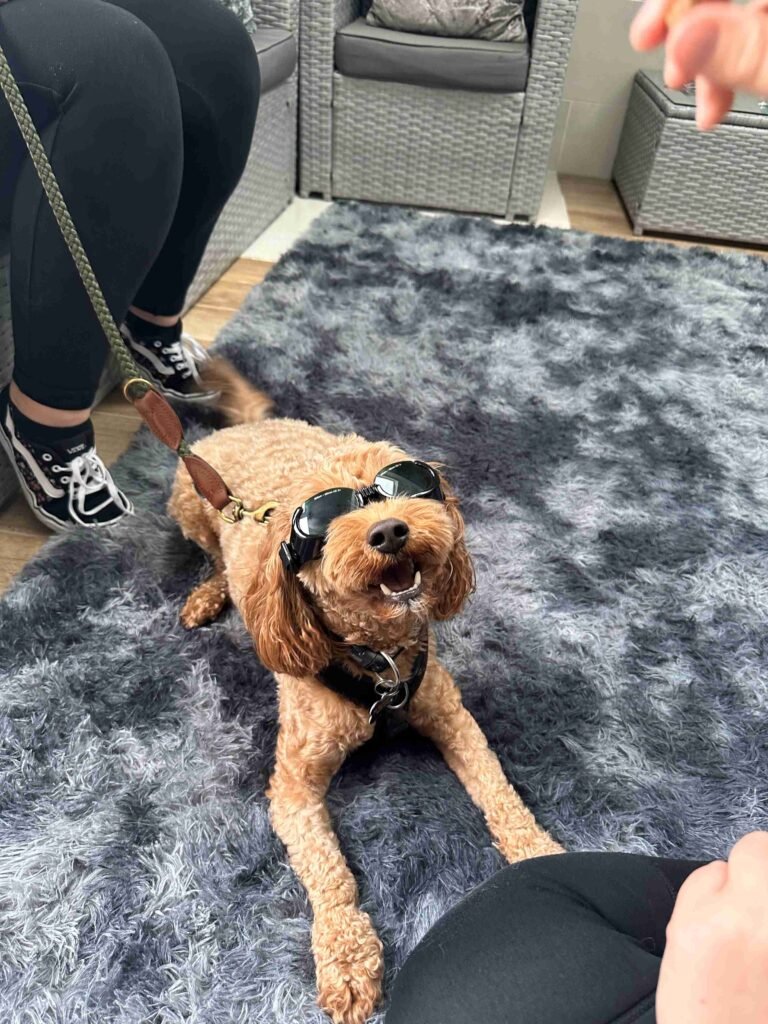
Client Testimonials About Laser


